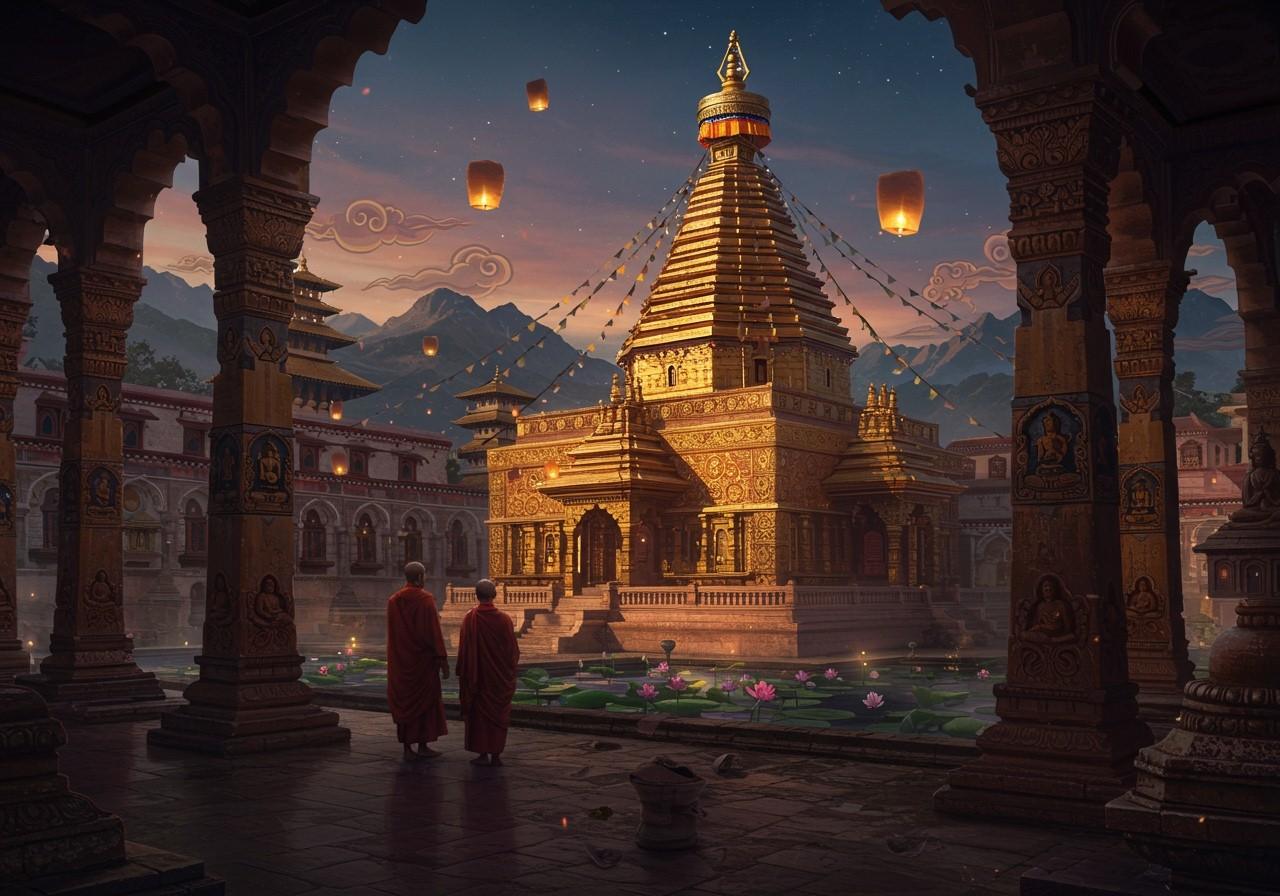
Rangapura Vihara shines as a treasured masterpiece in Indian classical music. Composed by Muthuswami Dikshitar, this kriti enchants listeners with its profound spirituality and artistic brilliance. Deeply rooted in the Carnatic tradition, it resonates with those seeking a connection to their cultural and spiritual heritage.
Origin and Historical Tapestry
Rangapura Vihara’s Genesis
Muthuswami Dikshitar, a revered composer, brought Rangapura Vihara to life in the 18th century. This period in South India was marked by a flourishing of cultural and religious expression. Dikshitar’s travels and spiritual experiences significantly influenced his compositions. The Bhakti movement, with its emphasis on devotion and spirituality, played a key role in shaping his work, as clearly reflected in this kriti. This piece showcases his deep reverence for Lord Ranganatha, encapsulating the essence of the era’s rich spiritual landscape.
Decoding Rangapura Vihara: Lyrics and Meaning
Unveiling the Spiritual Significance
The lyrics of Rangapura Vihara are imbued with devotion and spiritual meaning. Composed in Sanskrit, they vividly depict the majesty of Lord Ranganatha, the central deity of the Srirangam temple in Tamil Nadu. The lyrics beautifully portray Lord Ranganatha reclining on the serpent Adisesha.
Dikshitar’s poetic language draws upon a rich tapestry of mythology and sacred geography. The verses echo tales from the Ramayana and other ancient legends, forging a connection to the past. These narratives are skillfully interwoven into the song, deepening its emotional resonance and devotional impact.
Musical Architecture and Structure
Dikshitar selected the raga Brindavana Saranga for this kriti, known for its ability to evoke serenity and devotion. This raga perfectly complements the spiritual core of Rangapura Vihara. The intricate swaras (musical notes) and rhythmic patterns demonstrate Dikshitar’s musical genius.
Musicians performing this kriti often strive to convey its tranquil mood. The structure allows for artistic exploration while honoring the composition’s essence. This balance makes Rangapura Vihara a beloved piece in Carnatic music concerts.
Cultural and Religious Significance
Rangapura Vihara occupies a special place in Indian classical music. Frequently performed during temple rituals and festivals, particularly at Srirangam, it acts as a bridge connecting devotees with their cultural and spiritual heritage. This kriti plays a vital role in preserving the tradition of classical music, and its performance at cultural events underscores its enduring appeal.
For many, Rangapura Vihara transcends mere music; it is a spiritual experience.
Performance and Interpretation
Carnatic musicians bring their individual interpretations to Rangapura Vihara, offering fresh perspectives while respecting the composition’s original spirit. Artists like M.S. Subbulakshmi have popularized this kriti globally with their captivating performances. Performing Rangapura Vihara demands skill and a deep understanding of its nuances, requiring a balance of technical mastery and emotional expression.
Poojn.in: Supporting Your Spiritual Journey
Poojn.in empowers you to honor sacred traditions like those associated with Rangapura Vihara by providing authentic puja items and ritual supplies. As India’s leading Dashakarma bhandar, we offer essential items for worship, including:
- Pure copper and brass items, meticulously crafted for sacred rituals.
- Traditional puja thalis, complete with all the necessary components for offerings.
- Genuine ritual ingredients, sourced and prepared according to Vedic guidelines.
For devotees of Lord Vishnu and Garuda, we offer:
- High-quality brass and copper vessels for various ritualistic uses. These vessels are crafted with precision and care, ensuring they meet traditional standards.
- Traditional puja thalis, providing a convenient and organized way to offer prayers and perform rituals. Our thalis include compartments for different offerings, making your worship experience more fulfilling.
- Pure cotton wicks, camphor, kumkum, chandan, and premium incense sticks, all essential for creating a sacred and auspicious atmosphere during your pujas.
We deliver these sacred items across India, ensuring you receive genuine products that uphold traditional standards. Visit www.poojn.in to explore our complete collection.
Embracing Rangapura Vihara’s Legacy
Rangapura Vihara stands as a testament to the enduring beauty of Indian classical music and devotion. It invites us to delve into the rich tapestry of our cultural heritage, where music and spirituality intertwine. Whether a musician, devotee, or admirer, Rangapura Vihara offers a profound journey into Indian spiritual music.
FAQs: Exploring Rangapura Vihara
What is Rangapura Vihara? Rangapura Vihara is a renowned Carnatic music composition by Muthuswami Dikshitar, frequently performed in classical music concerts.
Who composed it? Muthuswami Dikshitar, one of the trinity of Carnatic music composers, known for his devotional compositions and intricate musical structures.
Which deity is praised? Lord Ranganatha, a form of Lord Vishnu, is the central deity praised in Rangapura Vihara.
What language is it in? Sanskrit, an ancient language often used in traditional Indian music.
What is the theme? The divine grace and beauty of Lord Ranganatha, describing his abode and celestial presence.
Where is Lord Ranganatha’s temple? Srirangam, Tamil Nadu, a significant pilgrimage site for Lord Vishnu’s devotees.
Are there famous renditions? Yes, many celebrated Carnatic musicians have performed Rangapura Vihara, each offering a unique interpretation.
Why is it significant? Rangapura Vihara showcases the rich lyrical and musical heritage of Carnatic music, admired for its devotion and melodic structure.
Also, you can find products related to Lord Vishnu and Garuda at poojn.in. We offer a wide variety of puja items to enhance your spiritual practices. Additionally, explore more about Odisha’s sacred sites and Bhubaneswar’s Vishnu temples in our related blog posts here and here.


